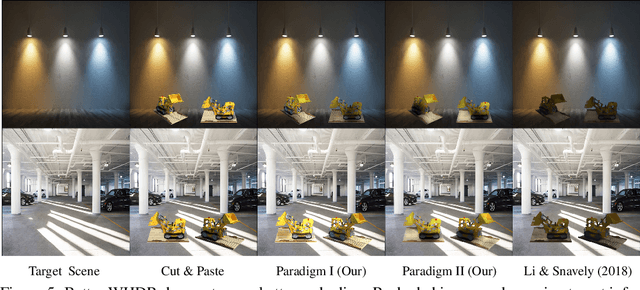Cut-and-Paste Neural Rendering
Paper and Code
Oct 12, 2020



Cut-and-paste methods take an object from one image and insert it into another. Doing so often results in unrealistic looking images because the inserted object's shading is inconsistent with the target scene's shading. Existing reshading methods require a geometric and physical model of the inserted object, which is then rendered using environment parameters. Accurately constructing such a model only from a single image is beyond the current understanding of computer vision. We describe an alternative procedure -- cut-and-paste neural rendering, to render the inserted fragment's shading field consistent with the target scene. We use a Deep Image Prior (DIP) as a neural renderer trained to render an image with consistent image decomposition inferences. The resulting rendering from DIP should have an albedo consistent with composite albedo; it should have a shading field that, outside the inserted fragment, is the same as the target scene's shading field; and composite surface normals are consistent with the final rendering's shading field. The result is a simple procedure that produces convincing and realistic shading. Moreover, our procedure does not require rendered images or image-decomposition from real images in the training or labeled annotations. In fact, our only use of simulated ground truth is our use of a pre-trained normal estimator. Qualitative results are strong, supported by a user study comparing against the state-of-the-art image harmonization baseline.
 Add to Chrome
Add to Chrome Add to Firefox
Add to Firefox Add to Edge
Add to Edge